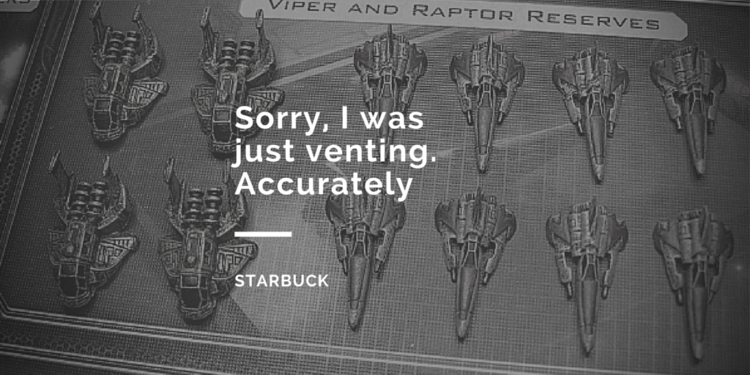Guide To Painting Battlestar Galactica Ships

Board Game Geek user Tolbold was originally drawn painting by the range of Lord of the Rings miniatures from Games Workshop. While he eagerly jumped into it, he soon realized he was not the level of artist who could freehand designs or create lifelike shading by instinct. Not wanting to give up he sought out easy techniques that consistently produced acceptable results.
Fast forward to when he heard about the Battlestar Galactica board game being released. The production quality in Battlestar Galactica is fantastic, but he felt that there were two problems with the plastic ships. The detail didn’t stand out and they weren’t all that easy for new players, unfamiliar with the series, to distinguish from one another. So he decided that he had to paint them.
The Basics
Before painting any miniature, it’s a good idea to prime it. I favour spraypaint for this task, but there are those who find that using watered down paint and a brush works just as well, if not better. Some do this anyway, after spraying, to cover any areas that might have been missed. I washed all the ships in warm, soapy water first, before rinsing them off and drying them. Again, many don’t bother with this step, but it’s quick and easy, so you might as well.
When spraying, I like to have the parts to be sprayed secured to a spare box or piece of card, so that they don’t move around, and also so that you can position them at any time without having to touch them. I use a product called Prestik to hold the ships in place. I believe something called Blu-Tac is the equivalent in the US. It’s a sticky substance, not unlike bubblegum, but it comes off most surfaces (but not hair) rather easily.
Drybrushing
Drybrushing is the only technique you need for this task. It is a method that involves wiping most of the paint off your paintbrush, by wiping it on some tissue or kitchen towel, and then lightly flicking it back and forth over the miniature you are painting. The paint will catch on the raised areas, bringing out the detail. In my experience, people new to this invariably have too much paint on their brush. Rather have too little than too much. You can always apply more coats.
Raiders
I decided to use Games Workshop’s Boltgun Metal, a metallic paint, for the raiders. Below, you can see the detail starting to appear after just a few brush strokes. The picture makes it look a little green, due to the lighting (and my poor photographic skills), but it conveys the idea, I hope.
Just keep on flicking the brush lightly back and forth, taking up more paint when you need to (brushing most of it off again, of course), until the level of coverage appeals to you. Below, you can see the progression from original to primed to complete.
Heavy Raiders
For the heavy raiders, I applied exactly the same technique and colours.
Raptors
The raptors often looked to be a golden/bronze colour. I liked this colour and went with it. I mixed some Desert Yellow with Shining Gold (again, Games Workshop paints) and applied it the same way (drybrushing over black primer).
Vipers
I know that the vipers are a cream/white colour in the series, and that the markings are quite clear and easy to recognize, but that presented a problem for me. Firstly, white is not the easiest colour to paint, especially when you want to get depth. Secondly, as mentioned above, I have no talent for freehand work, which is required to get the markings correct. In addition, by now I had developed a fondness for the metallic look of the other ships, making them look like metal miniatures, and I wanted to preserve that continuity. The raised areas on the wings of the vipers made for a natural area to paint red, even though it does not conform to the actual markings. I drybrushed the vipers a lighter metal colour (Games Workshop’s Chainmail) and applied Red Ink (Games Workshop again) on select areas, all of them neatly marked on the model itself so that I didn’t have to have such a steady hand. The Red Ink is transparent, allowing the silver underneath to show through, making for a metallic red. I know this is not at all accurate, and creates more of a hot rod look, but it does tie them in with the other ships and they look better than they would have if I had a go at freehand markings.
Conclusion
This simple technique makes the ships stand out a little more. Even if you just prime them all black and then drybrush them all the same colour, the detail will come out more. If you take the trouble to add a little more, players unfamiliar with the game/series should have no trouble at all in telling the ships apart.
Source: BGG user Tobold

